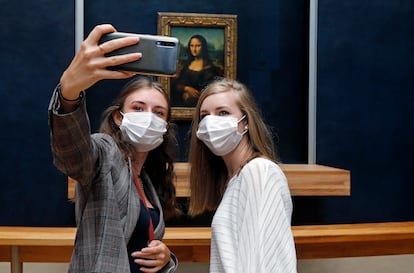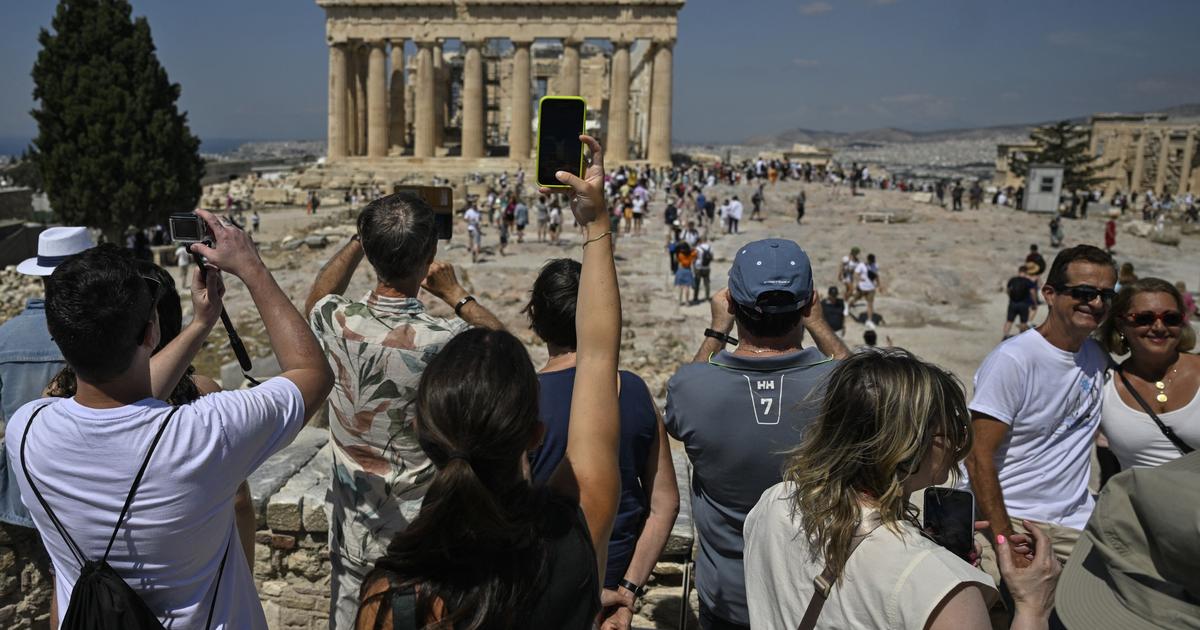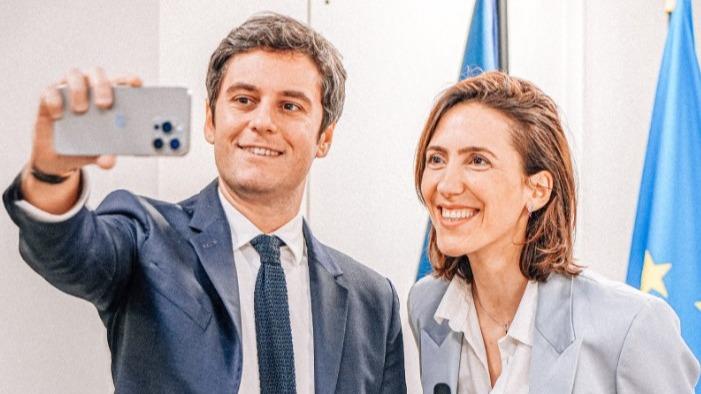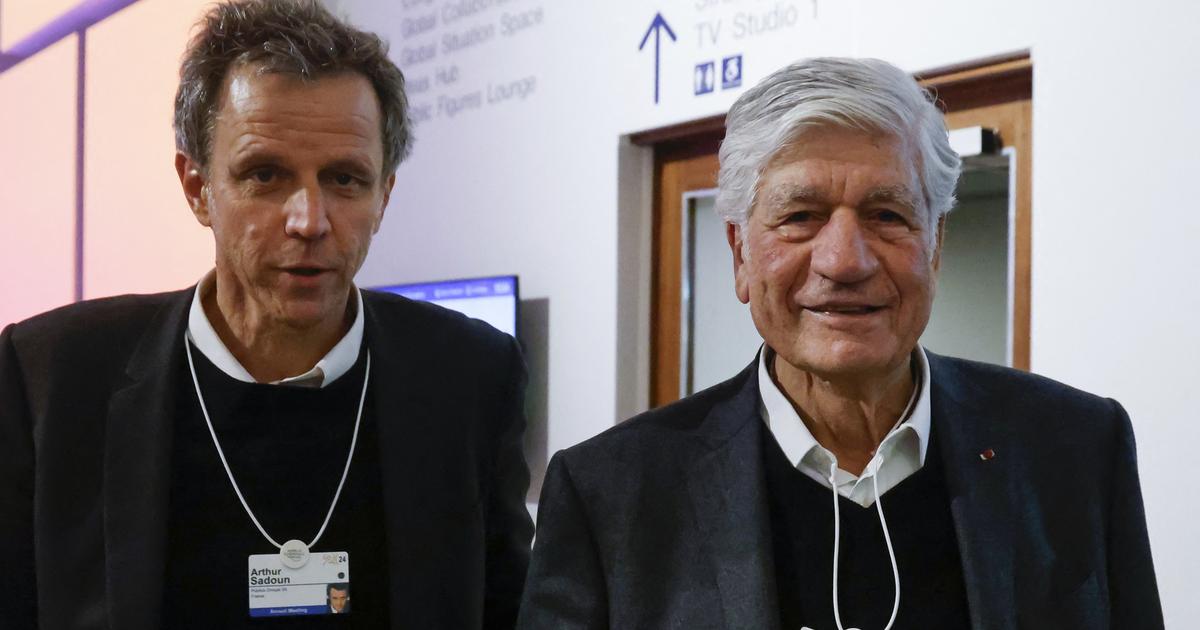During the NATO summit that took place this week in Madrid, the great world leaders, who had a large and varied agenda of activities, were photographed on Wednesday in front of
Las meninas
de Velázquez at the Prado Museum, where a dinner offered by chef José Andrés was also held that night.
Hours before, the first ladies (and two first gentlemen) had been portrayed before Picasso's
Guernica
at the Reina Sofía
,
just as Mick Jagger, leader of the Rolling Stones, did on May 31, which caused a stir because that is prohibited to the rest of the mortals.
In reality, a good part of the citizenry likes to take selfies in any situation, as evidenced by taking a look at Instagram, but the museum framework has something special: it provides a certain distinction, a certain cultural capital, as the sociologist Pierre Bourdieu.
A museum selfie says interesting things about us: that we are educated, that we have sophisticated tastes, that we are in the know.
It provides "cultural profitability", in terms of the aforementioned sociologist, and, therefore, distinction.
There are many museums in which, for years, it has been allowed to take photographs in general and selfies in particular, although sometimes bizarre events occur in these immortalization processes.
The first week of June, an Italian woman climbed onto a stage to take a selfie with the play
La pilgrimage of the horned
, by Alberto Sánchez, at the Reina Sofía: she stumbled, grabbed where she could and caused damage to the piece.
The work is now well thanks to the restoration team.
The leader of the Rolling Stones, Mick Jagger, in the controversial portrait in front of Pablo Picasso's 'Guernica', at the Reina Sofía museum.
“The selfie is part of the global culture of leaving a mark, of 'I've been there'”, says Fernando Hernández y Hernández, Professor of Fine Arts at the University of Barcelona (UB), “this is very much fueled by the networks, but also for a very narcissistic time: we have to make known what we are doing.
Before we used postcards or letters, and people imagined it: today we show them the image”.
This would be true for selfies in general, but in museums these self-portraits take on a new dimension.
"In addition to contemporary narcissism, I perceive something else: the desire to be part of something bigger than ourselves, to appreciate that environment, to want to be part of the culture that the museum represents", adds the professor.
The photo and the selfie in the museum have generated controversy.
There are those who do not see any grace in it, as a form of trivialization and spectacularization, and consider it, literally, a sacrilege in the midst of the temple of art.
“Someone who portrays himself in front of a work does not respect it.
He puts himself on the same level as this one, which he uses to improve his image.
A scholar or art lover will always have access to it through books and reproductions.
The museum is an area with controlled access (just like a church), so it should not be left vulnerable to the whim of just anyone.
Doing what you want with it is offensive”, declared the late art critic and professor Francisco Calvo Serraller to this newspaper in 2014. It was the moment when digital self-portraits were in the process of maximum popularization: the word
Selfi
was chosen at that time word of the year by the Urgent Spanish Foundation (Fundeu).
Two visitors to the Louvre take a selfie in front of Leonardo da Vinci's 'La Gioconda'. Chesnot (Getty Images)
Others do not see it with such bad eyes.
“Taking selfies in museums makes it possible, for a sector of the public, to take a less reverential approach to the works, and this practice usually leads them to seek additional information about them,” says essayist and cultural critic Eloy Fernández Porta, “whoever wants them to be banned It should also ask that
Archduke Leopold Guillermo be taken down from the Prado in his gallery of paintings in Brussels
, which is the antecedent of the digital self-portrait with works of art”.
The aforementioned work, by the Renaissance artist David Teniers, dated 1690, represents the nobleman, governor of the Netherlands, and his courtiers posing in selfie mode in front of a collection of paintings, to, as is currently the style, show off their cultural interests .
Everything is made up.
The thinker Walter Benjamin reflected, when the technical reproduction of art began to be possible, at the beginning of the 20th century, on that "aura", tied "here and now" to the original works, that I-don't-know-what that differentiates them from the copies.
A selfie with
Guernica
in the background will never be
Guernica
, it will never possess its “aura”, in the same way that a
Guernica
photocopied in the room of a progressive student of the Transition never was.
It's like the famous sparkle in the eyes of Lola Flores, which is not operated.
Museum policies of the selfie
Interestingly, museum policies on this issue have little to do with the sociological, aesthetic, or philosophical issues explored above.
They are more pragmatic: many allow selfies and photos because they enrich the visit (and visitors are needed to gain autonomy from public funds), as long as they do not get in the way.
In the Reina Sofía, scene of the events described at the beginning of this article, you can take photos everywhere (without selfie sticks or tripods) except in the surroundings of
Guernica
.
It is where the greatest influx of public is recorded and where the room guards are most entertained, repeating the mantra "no photo", although some visitors are offended.
“
Guernica
has a special power, there are many people who only go to the
Guernica
and many people who just want to take a photo," explains Concha Iglesias, head of the museum's press, "there are crowds, lack of security, this is the reason, very thoughtful, of the restriction."
The painting that was centuries ahead of the selfie with works of art.
'The Archduke Leopoldo Guillermo in his gallery of paintings in Brussels' (1690), by David Teniers, in the Prado Museum.
In this sense, another recent piece of news on museum security issues comes to mind: the cake attack against La
Gioconda
, in the Parisian Louvre Museum.
In the images released, in addition to the cake given by an environmental activist, it is striking, and not for the good, the number of
smartphones
suspended in the air trying to pick up first the Mona Lisa and then the unusual event.
The long-lived Florentine lady, an icon of universal art, did not alter her enigmatic smile: she was protected by glass.
For reasons like this, it is understood that large projects require a certain level of security.
Other museums, such as the Prado, are even more conservative in this regard: they do not tolerate photographs in any part of the enclosure.
It is one of the few large art galleries that do not allow photography and the reason, paradoxically, is the same as those that allow it: to improve the visitor's experience.
In addition to encouraging the public present, through photos and selfies, museums get notable (free) promotion, especially in times when a visit can also be understood as an
experience
and digital presence is essential to occupy a place in the world .
"We are interested in everyone feeling that their point of view is important, that there is not a single look, a single reading", concludes Carla Ventosa, director of Communication and Development of the Museum of Contemporary Art of Barcelona (MACBA), "You can tell someone about your experience in a museum... or show them a photo."
The last twist in terms of selfies and museums are the so-called "selfie museums", which are not exactly museums: they are places where there are not exactly works of art, but very showy scenery, games of mirrors, explosions of textures and color, optical illusions specially designed to take amazing selfies to share on social networks.
It is no longer even necessary to guard works of art to charge admission: it is the extreme case in which the selfie becomes so important that the work disappears.















